Menu
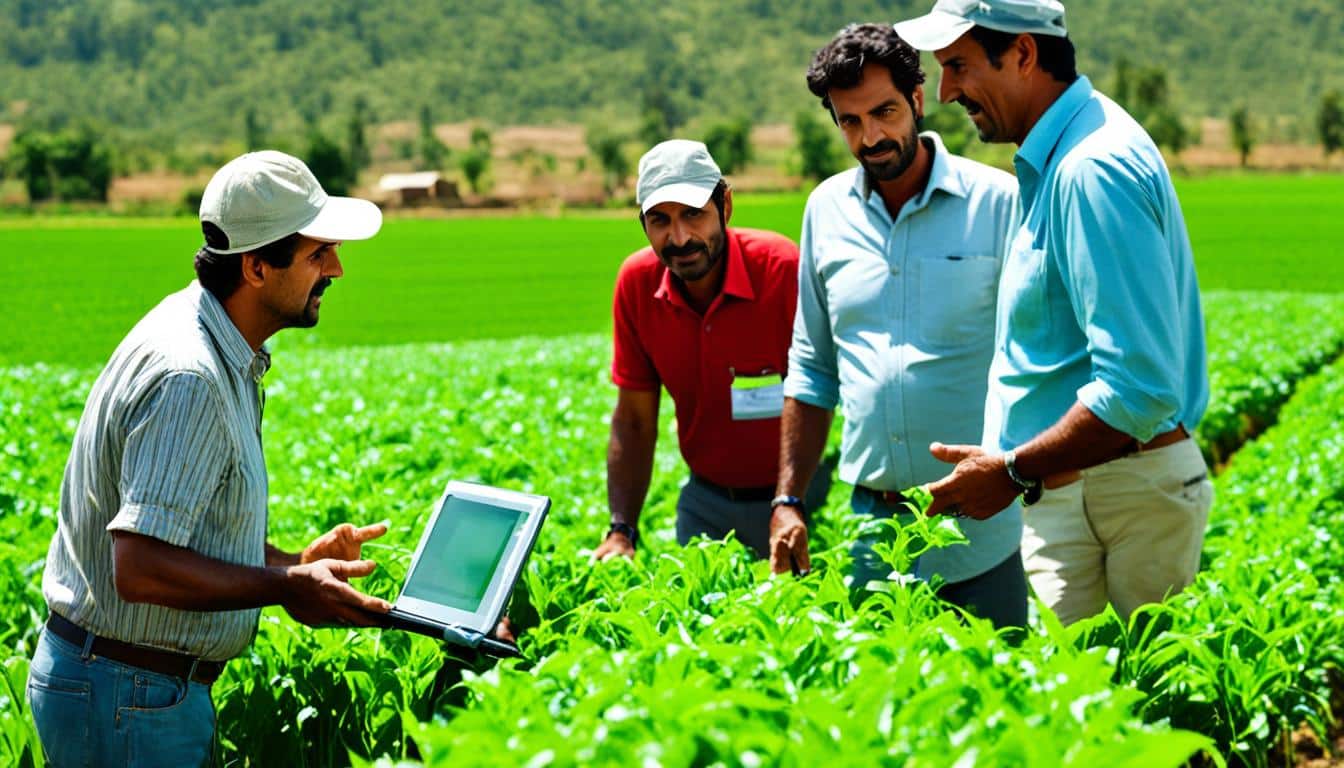
Did you know that the number of agri-environmental policies has surged a lot in recent years? This surge is noticeable, especially in the 2000s and 2010s. It’s particularly seen in the European Union, which has more than 90 policies in most countries. In contrast, areas like Sub-Saharan Africa and Asia see less than 20 policies.
The growth in these policies is due to the increasing need for sustainable farming. With the global population expected to reach 9 or 10 billion, it’s important to address environmental concerns. These include deforestation, biodiversity loss, and water pollution.
Nations that are wealthier tend to have more policies and enforce them better. This is because they use more agricultural inputs, such as fertilisers and pesticides. The European Union and the United States, for example, use a lot more fertilisers on their land than Africa does.
But just having many policies is not enough. We saw this with Sri Lanka’s ban on chemical fertilisers in 2021. While the ban aimed to lower pollution, it caused a big drop in rice production and hit other export areas. This led to an economic crisis. So, it’s crucial for policies to be well-thought-out and managed. They should consider both the environment and economic stability.
Agricultural policies are key in making food plentiful and safe. They also help lessen farming’s harm on nature. To tackle big issues like deforestation and pollution, agricultural policy strategies need to change. They have changed a lot over time to meet new challenges, which often affect both nature and people’s lives.
Agricultural policy strategies are very important. They work on both local and worldwide needs. These strategies aim for farming to be economically sound, fair to all, and friendly to the planet. They also include help when things go wrong, such as with severe weather or the COVID-19 pandemic. This help makes sure farms can keep running.
“Module 031” shared ways to look at policies as a whole. It showed why having a good plan is key to designing effective strategies.
Over time, agricultural policy strategies have changed a lot. Now, we have agro-environmental policies. They look after things like soil health and protecting forests. These policies use laws, rules, and checks. Reference to the “Thematic Overview” shows how farming has affected nature in the past.
Farm programs have been updated to include more types of support. This includes help for the climate like the Partnerships for Climate-Smart Commodities. Such changes bring many benefits, like those seen in the livestock industry in countries with medium incomes.
Efforts have also been made to make farming fairer and more eco-friendly. This includes changes in organic farming rules and new support for organic farmers. There are also new food help programs, like the Summer Electronic Benefit Transfer program, responding to needs from the COVID-19 pandemic. They focus on helping with food and nutrition.
The history of agricultural policies shows how they have always been about making food safe and protecting nature. They help the farming industry meet the world’s changing requirements. This supports the hope for a world where farming is sustainable and looks after the environment.
Governments have a big job to make policy goals real, especially in farming. These tasks include managing resources, working together, and fighting against interests that don’t help. Making policies work is hard and needs a lot of support and planning to do well.
Implementing policies means making tough choices that often have other unintended effects. For example, one policy might help in one area of farming but cause problems in another. Knowing and dealing with these trade-offs is key to making strong policies.
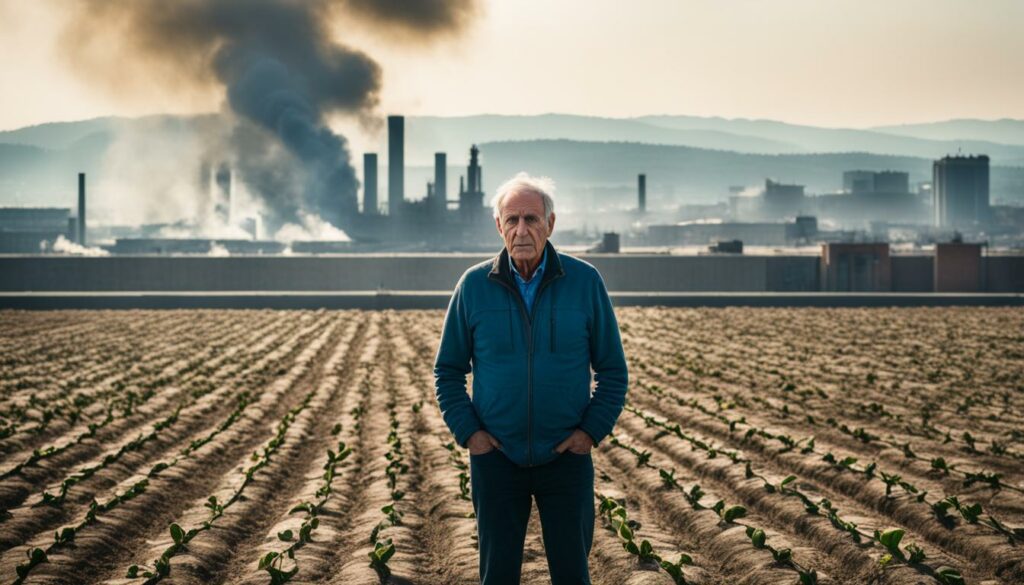
The way we design policies matters a lot. Bad design can cause big problems in making the policy work. In Africa, for example, poor planning in agriculture has made it hard to put policies into action.
Sri Lanka tried to help the environment by banning chemical fertilisers. This move cut food production by 40% and hurt the economy a lot. It shows we need to plan policies well to avoid such issues and balance our goals.
Good leadership and working together are crucial for policy success. In Africa, for example, donors helped a lot by improving skills, helping groups work together, and setting up effective teams. This shows how collaboration can solve problems in agriculture.
Agriculture is key for jobs and money, as seen in Malawi. Yet, it faces many challenges like not enough money, relying too much on outside help, and politics getting in the way. We must get better at how we put policies into action to beat these obstacles and help agriculture grow for everyone.
Across the world, some agricultural policies are shining examples of good governance. For instance, the European Union has lessened its use of fertilisers. At the same time, China has stopped the growth of its pesticide use. These achievements show how smart policies can improve agriculture sustainably.
The European Union has cut down on fertiliser use without harming farming output. This was done through reforms in the Common Agricultural Policy. The EU encouraged farmers to use sustainable methods and better soil health. Thanks to this, there was less harm to the environment without losing crops. It proves that policy changes can support responsible farming well.
China quickly implemented a policy to not grow its use of pesticides. This move decreased pesticide uses nationwide. As a result, water sources saw less pesticide pollution. This step strongly shows China’s dedication to protect the environment. It’s also a good example of how policies can make agriculture more eco-friendly.
The cases of the EU and China highlight the importance of focused policy updates. These changes help in making farming both sustainable and secure for food. Their achievements are proof that good policies can tackle challenging environmental issues in agriculture. They play a vital role in ensuring long-lasting sustainability.
It’s vital to know why agri-environmental policies matter to keep farming eco-friendly. They help in using fertilisers and pesticides wisely. Also, they look after the soil health and protect our forests and wildlife. Their impact is felt worldwide.
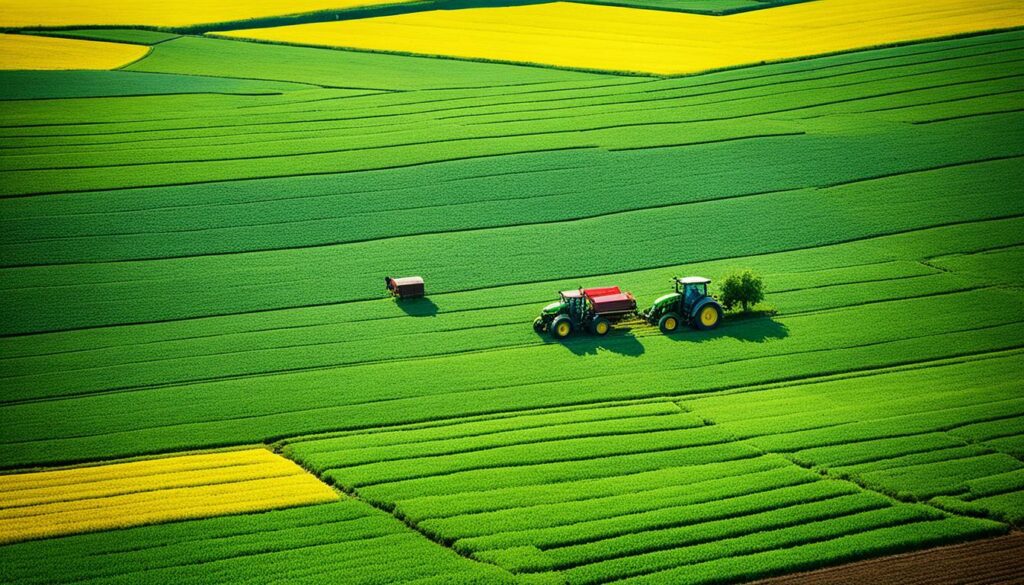
There’s a big list of 6,124 agri-environmental policies from 1960 to 2022. These were put in place in 200 countries. They show that making economy strong links to how well these policies work. About 43% of soil erosion issues come from different rules in different places.
The main type of rule is “command and control”, which means laws and orders. The number of these policies has been going up. They mainly look at use of fertilisers and how to keep forests and wildlife safe. Europe tops the chart in making more of these rules because the EU helps a lot. On the other hand, African countries don’t have many of these rules.
These rules have made big changes. There’s less soil erosion, and more wetlands and wildlife homes have been made. This all shows how key agri-environmental policies are for keeping farming sustainable.
| Region | Number of Policies | Focus Areas |
|---|---|---|
| Europe | Highest | Fertilizer Use, Forest Conservation |
| Africa | Fewest | Biodiversity, Soil Health |
Trade deals and how we give money to farmers can change these policies’ goals. The last 15 years have shown real changes in taking care of the environment in farming. This is a good step forward.
Not just talking or giving money, but new ways like an index for saving the environment have worked too. This shows these policies can change and still support sustainable agriculture.
These rules cover everything from choosing to follow them to making it a must. This mix helps farming to be good for the planet and still work for the people. They are key for a farming future that lasts.
Over the last few decades, how we govern agriculture has changed a lot. Especially in the 2000s and 2010s, we saw many new policies. These were often in the European Union. They were meant to make farming better for the environment and for the future.
A detailed look found 154 pieces on farming policy trends. But only 37 were up to scratch. This shows we’re making our ways of reviewing policies better. We’re now using fancy tools like machine learning. But we need more studies on how to do this well.
More and more, we’re realising how important it is to manage farms in a way that’s good for nature. There are five main types of policies for this. Some are focused on certain farming areas, like looking after the soil or saving water. And we now use smart tools to farm better, such as Variable Rate Technologies.
| Metrics | Statistics |
|---|---|
| Soil Erosion Decline (1982-2012) | 45% |
| Variable Rate Technologies in Corn (2016) | 40% |
| Conservation Tillage in Wheat (2004-2017) | 37% to 67% |
| Manuscripts Identified on Policy Trends | 154 |
| Studies Meeting Inclusion Criteria | 37 |
We’ve made big steps in making farming better for the planet. But the work isn’t over. There are still big challenges in farming that these policies need to tackle. So, we must keep coming up with new and better ways to run farms. This is key for both growing food and looking after our environment in the face of climate change.
The success of agri-environmental policies depends on not just the number. It’s also about how strong and well they are enforced. When we talk about policy stringency in agriculture, we must look at how strict and followed the rules are in each country.
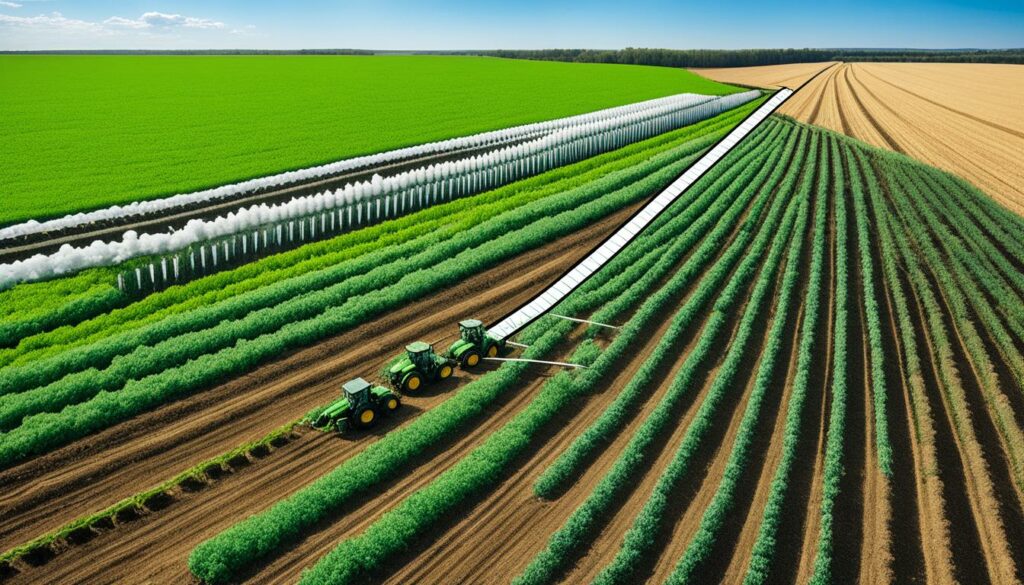
One way to see how well policies work is through intensity-weighted metrics. This approach considers enforcement levels and corruption. It looks at about 6,124 agri-environmental policies worldwide from 1960 to 2022. Wealthier countries usually enforce policies better, leading to stronger results.
The link between policy strictness, enforcement, and income levels is clear. Data shows a strong connection (correlation coefficient of 0.86). Richer countries have more policies and enforce them more strictly. However, some poorer nations have also effectively used their policies:
Over 200 countries show that policy creation and use are very important. This data is key for studying how to handle agricultural and environmental issues. It offers great insights into enforcing agricultural policies worldwide.
Agricultural financing can be complex. It’s becoming ever more important, with food demand set to rise 70% by 2050. This makes using the right strategies vital.
Investing in agriculture requires a deep knowledge of finance. Yet, the sector doesn’t get the $80 billion it needs yearly. This is especially true in poorer countries.
Experts should be skilled in legal and policy matters. This can help banks and other organisations give better financial support. Working with Rabobank and organisations like the FAO and IFAD has shown how important partnerships are.
Farms face big risks, from climate to costs. Dealing with these risks well is crucial for small agricultural businesses.
Collaborating with those who manage disasters and creating new financial products are key. These include value chain finance. They match agriculture’s unique needs.
By managing risks and finances well, agriculture can grow sustainably. It’s about finding smart ways to support the sector.
In agriculture, good policies come from both smart planning and using facts. Farming makes about 20–25% of all emissions, affecting the climate. So, using data to make policies is very important. It helps make farming sustainable and efficient.
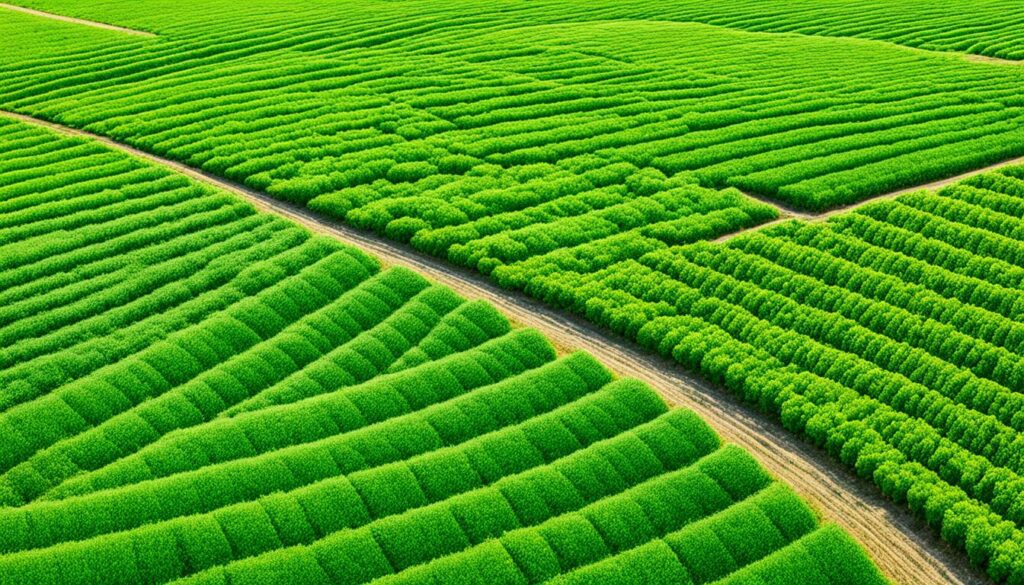
Data guides the core of farming policies today. Around 80% of poor people living in the countryside make a living from farming. Making policies based on accurate data is crucial to meet their needs. Research finds that policies designed for specific farmer groups work better.
By analysing lots of data, policymakers can see trends and plan for the future. They can create plans that fit best and work out well for everyone.
Putting policies into action is key for them to work. In the past, the farming sector was often ignored by decision-makers. Now, a dedicated agricultural policy approach is needed. This was seen in India’s crop insurance scheme, which protects farmers from losses.
It’s also essential to improve farming by investing in countryside areas. The Gates Foundation found big gaps in investment plans for agriculture in the past. It shows the need for well-structured and affordable policies. These plans should be clear and fit the situation in poorer countries, especially in Africa. They must be based on strong facts and real needs.
| Aspect | Data-Driven Policies | Effective Implementation |
|---|---|---|
| Focus | Based on data analysis | Strategic execution |
| Challenges | Accurate data collection | Budget allocation |
| Impact | Informs targeted solutions | Ensures practical outcomes |
| Examples | Segmenting farmer groups | Pradhan Mantri Fasal Bima Yojana |
Data-led policies can change farming for the better, making it more sustainable and strong. With careful planning and using the right data, countries can solve many challenges in farming.
The impact of farming policy tactics on trade is huge and complex. It affects how global agricultural markets work. Research that over 187 thousand people have read shows these policies’ importance. They can be good or bad for farming. This is because they use things like cash and tax benefits to help farmers. Yet, sometimes these efforts don’t mean we get more food. This shows how tricky global farming policies can be.
It’s crucial to understand these policies as they don’t just change local farm economies. They also affect the world’s food supply. Take the United States, for example. It gives a lot of help to its maize farmers. This aid is pretty big. It helps the US sell lots of maize around the world. The info suggests that if we fix these policy issues, the world could get $56 billion richer every year. This would be about 0.2% of the money made in the whole world.
Over half of the problems in how farm markets work come from tariffs and special trade limits. These rules bump up the prices. On average, tariffs on farm goods are pretty high. This hurts fair trade. It also makes it hard for everyone to get the food they need. Support from within a country and for selling food abroad also makes a difference. Together, these things show that local farm policies can really shake up the global market.
Making these policies fairer doesn’t just mean changing some numbers. It’s about looking at the bigger picture. By doing this, poorer countries could get $21 billion more every year. This is a big deal. It shows how important it is to work together. Some changes, like stopping export help from the European Union, could really help.
Soil health policies and protecting biodiversity in farming are crucial. There have been 6,124 agri-environmental policies made since 1960 across 200 countries. These rules help tackle soil problems, chemical pollution, and the loss of plant and animal life.
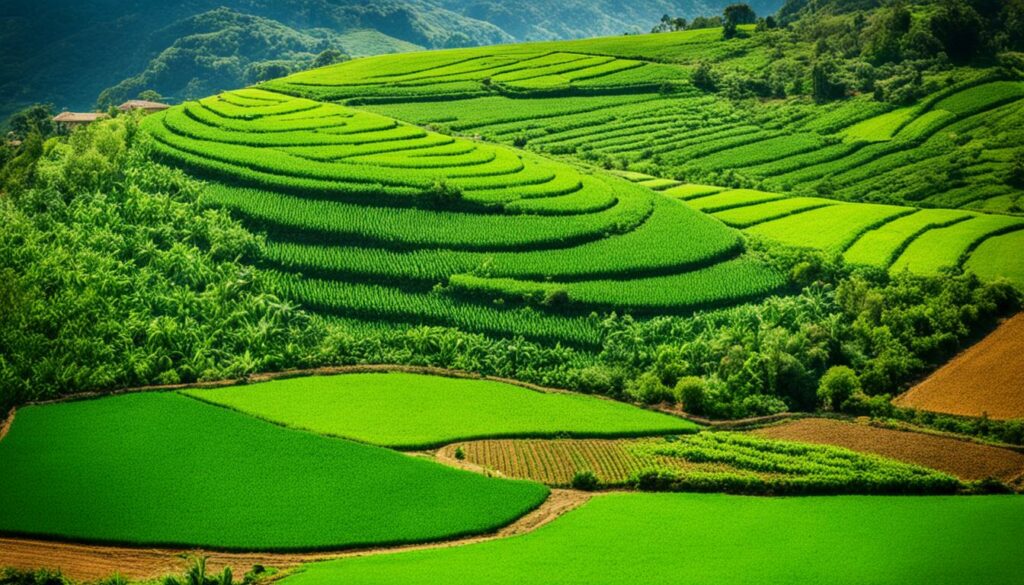
Important laws in farming focus on strict rules and checks. They help cut soil erosion by 43% worldwide. Europe is a key player in this. Thanks to the European Union, it pushes for less use of fertilisers and protects forests and wildlife.
Farming is essential yet a big threat to the environment. It is vital to have good government rules. The EU’s Common Agricultural Policy (CAP) makes sure food is grown responsibly. It also protects nature by including practices to stop soil erosion and keep soil healthy.
Better farming and fewer losses in nature show that policies work. The CAP from 2023 to 2027 even does more for soil and the environment. It supports ‘green’ farming strongly. Richer countries tend to have more of these helpful farm rules. This links better wealth with caring for the environment.
Sri Lanka’s choice to stop chemical fertilisers in 2021 was a tough lesson. Rice and main export crops dropped a lot. But, it showed that careful planning of rules is very important.
It’s key to check if farming laws and soil health rules are doing well. Projects like the European Initiative ‘AGRI’ blend science and farming. This partnership boosts good soil care to improve crops and protect nature.
| Region | Common Policy Targets | Policy Implementation Drivers |
|---|---|---|
| Europe | Fertilizer Use, Forest Conservation, Biodiversity | European Union Policies |
| Sub-Saharan Africa & Asia | Fertilizer Use, Erosion Control | National Regulations, International Assistance |
| United States | Pesticides, Soil Conservation | Federal and State Legislation |
| China | Zero-Growth Pesticide Policy, Sustainable Soil Management | Government Subsidies, Efficient Use Programs |
To wrap up, making and improving farm laws is key for healthy soil and nature. New ideas and strong farm rules will help farming be kinder to the planet. This way, we can make sure global farming is sustainable and safe for the future.
It’s crucial to involve stakeholders in creating agriculture policies. New models highlight the need for many voices and political acceptance. This process brings together various people like farmers, regulators, and business partners. They work together to create policies that meet everyone’s needs. In aquaculture, involving these stakeholders has made policies more practical and successful.
Good communication is vital for successful policy-making. Clear communication helps share ideas and creates team spirit. If communication is poor, it can lead to unequal power and resource access. This can hold back decisions. Also, not knowing local conditions can hurt policy accuracy. So, policies should look at production, distribution, the environment, and social aspects together.
Working together improves the making and effect of agriculture policies. There are three main ways stakeholders can be involved: direct, advice, and working together. The best way varies, depending on the project and what the stakeholders can do. In 1992, the UN called for more people and community involvement. This leads to better, more realistic policies and successful outcomes.
The agricultural field is changing fast. We need new policies to blend tech advancements in. The world will need 70% more food by 2050. So, merging technology and policy effectively is critical and bound to happen.
Precision farming is a clear example of this. It is a big player in the changing scene. By 2028, its market size could reach $16.35 billion. With a growth rate of 13.1% per year, tools like Real-Time Kinematic (RTK) are improving the way we farm. RTK, for instance, provides very accurate measurements, letting farmers use resources wisely.
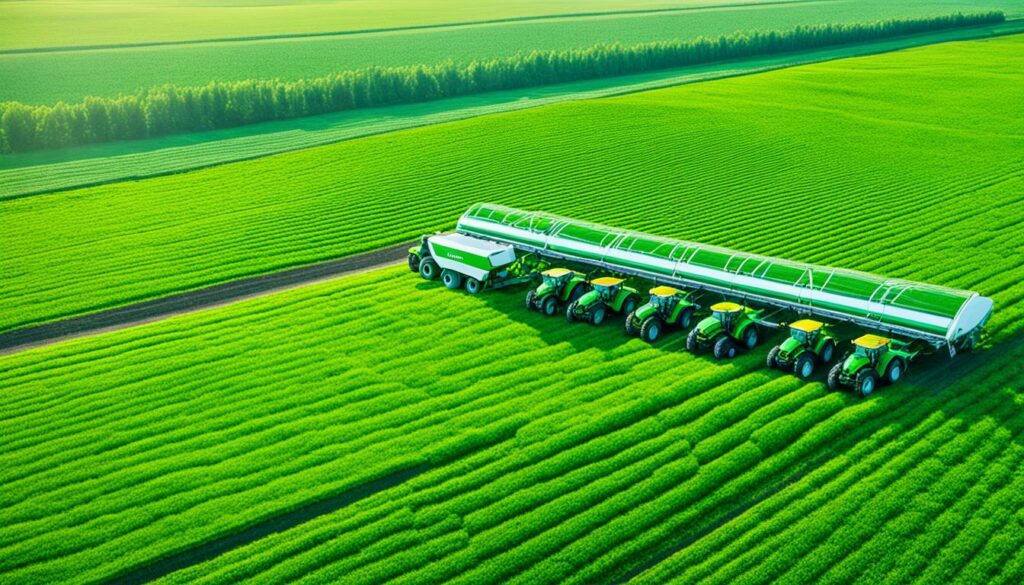
Another great tech move is indoor vertical farming. It can cut water use by 70% compared to usual ways. It saves water and lowers power use and labour costs. This leads us towards farming that’s kinder to the planet.
Automation is changing farming too. It makes tasks faster and cuts down on hard work. Farmers get more time with their loved ones. Also, laser scarecrows can lower crop harm by 70% to 90%. It shows how far tech has taken us in managing farms.
The market for farm management software is growing fast, expected to expand 11.2% yearly up to 2026. More farmers are relying on digital aids to improve their work and make better choices. Tools like Bee Vectoring help protect crops safely and make farming more sustainable.
There’s also minichromosome tech for boosting plant traits directly. This could increase crop yield by 23%. The U.S. aims to produce 40% more food by 2050, but in an eco-friendly way. This shows smart use of tech and policy to make a positive difference.
| Technological Innovation | Projected Impact |
|---|---|
| Precision Farming | $16.35 billion market by 2028 |
| Indoor Vertical Farming | 70% less water usage |
| Laser Scarecrows | Crop damage reduction by 70%-90% |
| RTK Technology | Centimeter-level accuracy |
| Farm Management Software | CAGR of 11.2% by 2026 |
| Minichromosome Technology | 23% increase in crop production |
| Bee Vectoring Technologies | Enhanced sustainable farming practices |
Bringing together new technology and solid rules can do a lot. It can help us produce more food while being kind to the earth. This partnership of tech and policy is making farming stronger and more successful. It’s not just a dream for the future; it’s happening now.
The way we plan policies in agriculture is key for growth that lasts and protects our planet. These policies have to look at the big picture. They need to support both the environment and the economy. Let’s discuss why it’s critical to make policies in agriculture that are good for everyone.
Creating agricultural policies that focus on sustainability is vital for a healthy farming sector. Farming makes up a big part of the emissions causing climate change. So, we must set rules that cut these emissions and still help farming grow. Putting money into farming research and new technologies helps the industry make more money and reduces poverty.
Finding the right balance between protecting nature and making a living is tricky. For many poor people in developing countries, farming is their main source of income. Policies should help farmers earn money without harming the environment. For example, crop insurance in India is a good scheme helping farmers when things go wrong.
A recent study shows that in eleven countries, most of the money given to farms helps individual farmers. This kind of help not linked to what a farm produces lets farmers improve their work. It helps them earn more money and protects the environment. On the other hand, Australia and Brazil give very little direct help to farmers. Here, policies that help all farmers are not as strong as in the other countries.
| Country | Producer Support Estimate (PSE) |
|---|---|
| Japan | Above 50% |
| Korea | Above 50% |
| Switzerland | Above 50% |
| Australia | Below 3% |
| Brazil | Below 3% |
To really help, we need to plan agriculture policies that look at the big and small effects. This way, we can support farmers and protect our planet. Only then can we make policies that ensure farming is good for the earth and our economy.
It’s vital to look closely at agricultural policies to make sure they work well. The FAD started a special team for this in 2007. They did this after getting advice from the GAO and the USDA Office of the Inspector General. Later reports from the GAO in 2011, 2016, and 2017 showed things were getting better.
The FAD uses strong systems to check programs carefully. Important ones include McGovern-Dole and Food for Progress. They also look at Local and Regional Food Aid Procurement Programs. The law says an outside team must do these checks. This makes sure the checks are fair and cover everything.
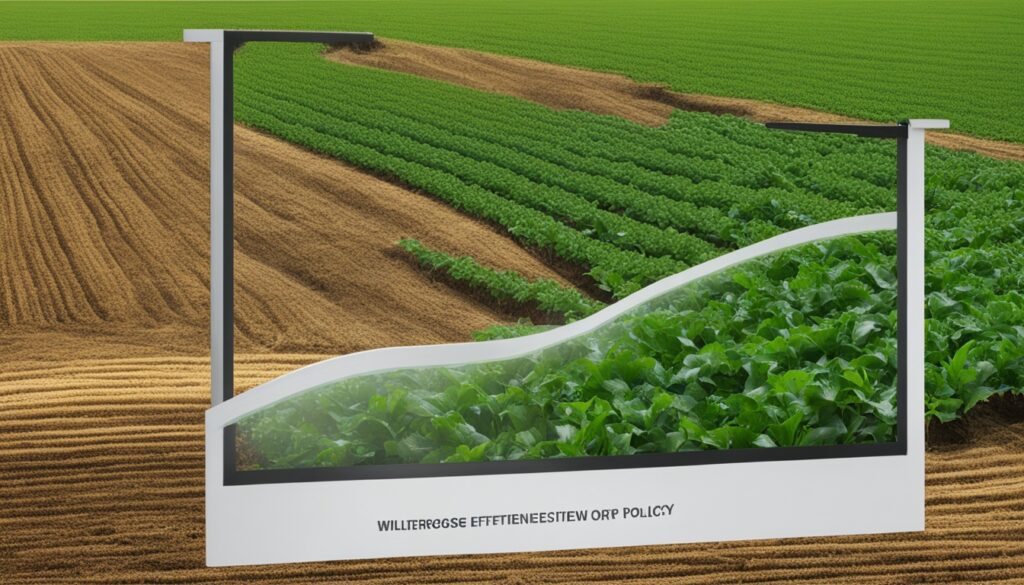
From 2009, they’ve used a better way to manage programs. This ROM system focuses on getting better results and checking the impact. Several laws, like the GPRA, and guidelines from the OMB help shape these policies. They follow high standards from the OECD and the American Evaluation Association.
The CMEF framework is key for making future policies. It sets clear goals and checks how well they’re met. It uses many measures to do this. They update these measures every year to keep track of changes.
Being so thorough in monitoring policies means we can always improve them. This way, we keep making changes to make the policies better and more useful.
The agricultural sector faces many challenges, pushing us to keep up with the latest trends. In 2015, it added a huge $136.7 billion to the U.S. economy. This industry created a massive 2.6 million jobs, showing its vital role.
Climate change is rapidly altering our landscape. It will change rainfall, make climate extremes stronger, and affect pests. All this means our agricultural policies must be ready to deal with new challenges. This is key to protecting our crops and economy.
The sector’s wider impact is huge, adding $855 billion more and creating 21 million jobs. However, climate change means more extreme weather, putting our farming methods and rural areas at risk. Reactive and smart policies are vital in the face of such challenges.
Our farming depends a lot on nature, making it very sensitive to our actions and climate change. We must adopt strategies to limit soil problems and protect our natural resources for the future.
Rural areas are home to about 46 million people and are under great pressure. Some counties saw fewer people from 2010 to 2015, suggesting slow job growth and high poverty. These shifts make crafting future agriculture policies harder. We need strategies that can stand the test of time and bring everyone on board.
The importance of climate-smart agriculture is now more evident than ever. With the world’s population set to reach 9.5 billion by 2050, we must increase food production by 60% from 2005 levels. This goal reflects on seven of the 17 Sustainable Development Goals (SDGs). It underlines the need for strong policies that support sustainable food growth, climate adaptation, and resilience. By adapting to future agricultural trends, we can overcome current obstacles and secure a stable future for agriculture.
In today’s world, it’s crucial to have the right policies in agriculture. These policies should balance the need for food with protecting the environment. They also aim to cater to a growing global population. For example, the €387 billion set aside for the Common Agricultural Policy (CAP) for 2021-27 is a big step in this direction.
This money, split into two parts, shows the huge financial effort needed. The European Union gives €291.1 billion for agricultural guarantees and €95.5 billion for rural development. The EU also plans to spend €8 billion from Next Generation EU to help rural areas go green and digital. This shows a strong commitment towards these goals.
By allowing countries to shift up to 25% of their CAP money, the EU makes the spending more flexible. It means countries can focus on different needs, like helping the environment or supporting young farmers. The EU also puts €10 billion into the Horizon Europe programme. This aims to encourage new ideas and research in agriculture. These steps show the EU is serious about making agriculture better for the future.
Small farms and rural areas often face big challenges from climate change. These places need smart policies that can adapt and stay strong. The Climate Smart Agriculture (CSA) approach is all about this. It suggests using innovation, market solutions, and better farming methods.
By focusing on building strong institutions and using resources wisely, these policies can help a lot. They ensure farming can prosper in the long run. The goal is to have policies that are both fair and can change with the times. This way, the agriculture sector can continue to grow and meet everyone’s needs.
Agricultural policies are key to food safety and reducing harm to the planet. They include rules, laws, and ways to watch over using land well. This leads to making food in good ways, saving nature, and not wasting resources.
Over time, these policies have changed to deal with different needs and the world. They started by focusing on food growth. Now they also care about soil, forests, and other life, reflecting bigger world issues.
Putting these policies in place can have mixed effects and go further than planned. This happens when the policies are not thought out enough or are not the best. For example, Sri Lanka recently stopped the use of certain chemicals.
The European Union used new policies to cut down the use of fertilisers. And these changes didn’t bring down how much food was produced. China also did great with their plan to stop using more pesticides.
These policies matter a lot for doing farming in right ways. They keep the soil and nature healthy, which is needed for food and the planet.
In the last years, more and more farming policies have started. This is especially true in the European Union. Other places, like Sub-Saharan Africa and Asia, have fewer policies. But we now see that countries all over know how important these rules are.
Having strong and well-followed rules is critical. They help make farming policies work better. A study shows richer countries usually have these strict rules, though there are times when they don’t.
To fund farming well, it’s important to really understand farming and manage risks. Using data to decide is key. This helps make plans that really work for the people in farming.
When making farming rules, looking at data is a must. Good planning and smart steps to put plans in place matter a lot. Things like sorting out loans help keep up with the market.
By making rules about farming, countries can change how products move around the world. This means local rules can affect the whole world’s food business. It shows how everything is connected.
Policies for farming promote healthy soil and keep life kinds safe by law. These laws help farmers use the land in good ways. This helps make more food and keeps the world green.
It’s crucial to talk to farmers, officials, and the industry when making rules. Working together and speaking well helps get everyone’s ideas together. This makes it easier to agree on what to do.
New farming tech should be part of the rules. By supporting new tools and rules, we farm better. This way, technology and policy help each other out.
To make good farming policies, we balance looking after the world with making money. These rules should help farming last long and keep the Earth healthy. This way, farming can keep going and growing.
Keeping an eye on rules and checking how they work is crucial. This helps see what’s good and what needs to change. It makes sure the rules keep doing what they are supposed to.
Policies must be ready for the future by changing when needed. This makes farming able to take on new challenges. Adapting helps keep farming strong and ready for what’s ahead.